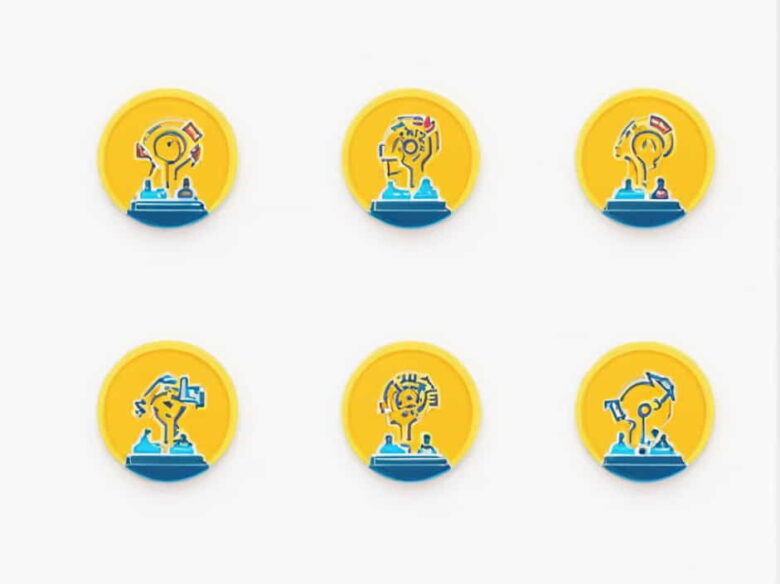Engaging and motivating learners is essential for effective education. Whether in a classroom, online setting, or workplace training, learner engagement directly impacts knowledge retention and overall success. When students or trainees are motivated, they participate actively, develop a deeper understanding of the subject, and stay committed to their learning goals.
This content explores various strategies to engage and motivate learners, ensuring a productive and enjoyable learning experience.
1. Create a Positive Learning Environment
A positive and supportive environment encourages learners to stay engaged and motivated. This can be achieved by:
- Encouraging open communication
- Fostering a sense of belonging
- Creating a safe space for asking questions
- Using interactive teaching methods
When learners feel comfortable and valued, they are more likely to participate and stay committed to the learning process.
2. Use Interactive Teaching Methods
Traditional lectures often lead to passive learning, which can cause disengagement. Instead, active learning methods make lessons more interesting and memorable. Some effective techniques include:
- Group discussions Encourage collaboration and idea-sharing
- Case studies Help learners apply concepts to real-world scenarios
- Problem-solving activities Promote critical thinking
- Role-playing Enhances experiential learning
- Gamification Incorporates game elements like rewards and challenges
By making lessons interactive, learners remain actively involved in their education.
3. Set Clear Goals and Expectations
Learners perform better when they understand what is expected of them. Setting clear objectives helps learners stay focused and motivated.
- Use the SMART goal-setting method (Specific, Measurable, Achievable, Relevant, Time-bound)
- Provide a structured roadmap for the learning process
- Regularly review and adjust goals based on progress
When learners know their targets and milestones, they stay engaged and motivated to achieve success.
4. Provide Regular Feedback and Encouragement
Constructive feedback helps learners recognize their progress and areas for improvement. Effective feedback should be:
- Timely Given immediately after performance assessment
- Specific Focused on particular strengths and areas of improvement
- Encouraging Motivates learners rather than discouraging them
Additionally, positive reinforcement, such as praising efforts and rewarding achievements, can boost motivation and confidence.
5. Incorporate Technology and Multimedia
Using modern tools enhances engagement, especially for digital-native learners. Technology can be integrated into learning through:
- Educational videos Make concepts easier to understand
- Online quizzes and assessments Keep learners engaged in a fun way
- Interactive simulations Provide hands-on learning experiences
- Learning management systems (LMS) Organize and track learning progress
When lessons are visually appealing and interactive, learners are more likely to stay motivated.
6. Make Learning Relevant and Practical
Learners are more engaged when they see the real-world applications of what they are learning. Strategies to enhance relevance include:
- Connecting lessons to real-life situations
- Using industry-specific examples
- Inviting guest speakers or professionals
- Encouraging hands-on projects
When learners understand the purpose and benefits of their education, they stay motivated to learn.
7. Encourage Self-Directed Learning
Giving learners autonomy over their learning increases motivation. Strategies to promote independent learning include:
- Allowing learners to choose topics of interest
- Providing various learning resources
- Encouraging self-paced learning
- Teaching critical thinking and research skills
When learners take ownership of their education, they develop a lifelong learning mindset.
8. Foster a Growth Mindset
A growth mindset, as proposed by psychologist Carol Dweck, encourages learners to believe in their ability to improve through effort and persistence. Teachers and trainers can:
- Encourage perseverance in the face of challenges
- Praise effort and improvement, not just results
- Teach learners that mistakes are part of the learning process
When learners develop a growth mindset, they remain motivated despite difficulties.
9. Use Peer Learning and Collaboration
Learning in groups enhances motivation and engagement. Collaborative learning activities include:
- Peer teaching Learners explain concepts to each other
- Group projects Encourage teamwork and creativity
- Study groups Help learners stay accountable
Collaboration fosters a sense of community, making learning more engaging and enjoyable.
10. Adapt Teaching Methods to Different Learning Styles
Not all learners process information the same way. To maximize engagement, instructors should incorporate varied teaching strategies based on different learning styles:
- Visual learners Use diagrams, charts, and videos
- Auditory learners Incorporate discussions, podcasts, and lectures
- Kinesthetic learners Use hands-on activities and experiments
- Reading/writing learners Provide text-based resources
Customizing lessons ensures inclusive and effective learning for all students.
11. Introduce Challenge and Healthy Competition
Challenges motivate learners to push their limits. Teachers can:
- Create friendly competitions (quizzes, leaderboards)
- Introduce learning challenges (problem-solving tasks)
- Set progress milestones to track improvement
Healthy competition boosts engagement without creating excessive pressure.
12. Promote Emotional Connection to Learning
Learners are more engaged when they feel emotionally connected to a subject. Educators can achieve this by:
- Sharing inspiring stories related to the topic
- Encouraging learners to relate topics to personal experiences
- Using real-life case studies that spark curiosity
When learners connect emotionally, they are more likely to stay motivated.
13. Recognize and Celebrate Achievements
Acknowledging progress boosts motivation. Some ways to celebrate achievements include:
- Giving certificates or badges for milestones
- Publicly recognizing efforts in class or group settings
- Encouraging self-reflection on personal growth
A sense of accomplishment keeps learners engaged and inspired to continue.
Engaging and motivating learners is essential for effective education. By creating a positive learning environment, using interactive methods, incorporating technology, and encouraging self-directed learning, educators can ensure higher engagement and better retention.
Each learner is unique, so a combination of strategies works best to keep them motivated and actively involved in their learning journey. When learners see the relevance, purpose, and rewards of education, they stay committed to lifelong learning and personal growth.



